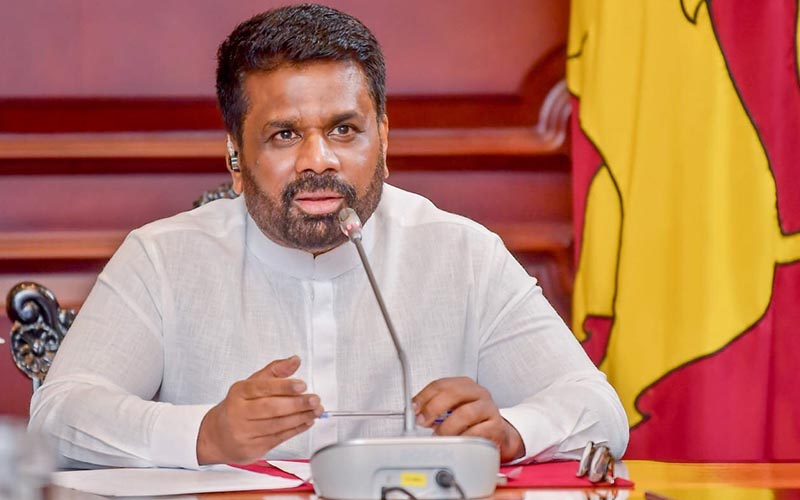
Record Credit Surge Fuels Optimism – But Can President’s Rs. 4 Trillion Revenue Goal Survive Policy Gaps?
- CNL Reporter
- August 9, 2025
- Weekly Economic Review
- President disanayake
- 0 Comments
Weekly Economic Review Sri Lanka’s economic indicators for early August 2025 point to a recovery that appears more confident than at any time since the 2022 crisis. Private credit growth has surged to record levels, foreign reserves have inched higher, and government revenue has improved.
Against this backdrop, President Anura Kumara Dissanayake told Parliament this week that the government is on track to achieve the ambitious Rs. 4 trillion annual revenue target for 2025, citing stronger tax collection, an expanded tax base, and revived economic activity.
But while the numbers tell a story of momentum, economists warn that the structural policy gaps and the fragility of the recovery could still derail these targets if fiscal discipline, investment climate reforms, and external stability are not maintained.
Credit Expansion at Historic High
The most striking development was in the monetary sector. Private sector credit expanded by Rs. 221.6 billion in June 2025 — the largest monthly jump in Sri Lanka’s history — representing a 17.9% year-on-year increase. Broad money (M2b) also grew by 10.4%, reflecting revived lending and investment appetite.
Net credit to the government rose by Rs. 47 billion, while credit to public corporations contracted slightly by Rs. 1.1 billion. Market liquidity remained in surplus at Rs. 88.52 billion, up from Rs. 76.29 billion a week earlier.
The Weekly Average Weighted Prime Lending Rate (AWPR) increased by 18 basis points to 8.25%, while the Average Weighted Call Money Rate (AWCMR) edged up to 7.85%. Reserve money growth was driven by higher currency in circulation and increased commercial bank deposits with the Central Bank.
Stock market sentiment was softer, with the All Share Price Index (ASPI) falling 0.44% to 19,826.57 points and the S&P SL20 slipping 1.18% to 5,825.39.
Fiscal Revenues Improve, But Debt Risks Persist

Government revenue and grants for the first half of 2025 rose to Rs. 2,325.1 billion, a sharp improvement from Rs. 1,864.6 billion in the same period last year. The budget deficit narrowed to Rs. 405.6 billion from Rs. 598.7 billion a year ago, thanks to better tax enforcement and the reintroduction of certain suspended levies.
However, expenditure and net lending also grew to Rs. 2,730.7 billion, keeping domestic debt pressures high. As of April 2025, central government debt had climbed to Rs. 29,480.4 billion, with domestic debt at Rs. 18,629.9 billion and foreign debt at Rs. 10,850.5 billion.
Treasury Bill and Bond yields remained broadly stable, with the latest T-Bill auction oversubscribed nearly twofold — a sign of renewed investor appetite.
External Sector Stability Improves
Gross official reserves increased slightly to US$ 6.14 billion by end-July, supported by a tourism rebound and stronger remittances. Tourism earnings in July hit US$ 318.5 million, up from US$ 169.5 million in June, while workers’ remittances rose to US$ 697.3 million from US$ 635.7 million.
The Central Bank recorded net foreign exchange purchases of US$ 81.8 million in July. The rupee has depreciated by 2.7% year-to-date, but inflows have kept currency volatility in check.
Inflation and Growth Trends

Headline deflation eased to 0.3% in July, continuing the moderation seen over recent months. First-quarter GDP growth stood at 4.8%, driven by manufacturing and services expansion. The Purchasing Managers’ Index (PMI) for June showed continued expansion in both sectors.
Tourism and Policy Changes

The government’s free visa entry expansion has been welcomed by the tourism industry, with the Advocata Institute calling for longer-term liberalisation to attract higher-spending visitors and boost repeat arrivals.
Other developments included:
EDB consultations with exporters on the impact of US tariffs.
Moderation in construction sector growth.
Hayleys teaming up with Chery Automobile to expand in mobility.
Cabinet approval for Sri Lanka’s first virtual city pilot project in Kandy.
FIU-Sri Lanka signing an MOU with Oman’s NCFI on financial intelligence cooperation.
Ongoing IMF discussions on the Extended Fund Facility (EFF) and timing of the Fifth Review.
The President’s Rs. 4 Trillion Challenge
President Dissanayake’s optimism rests on three pillars:
Tax compliance and enforcement – Recent improvements in revenue collection suggest some success here, but the underground economy, estimated at 20–25% of GDP, remains a major leakage point.
Economic growth momentum – Sustaining 4–5% growth in the current global slowdown and amid high domestic debt servicing costs will be challenging.
Tax base expansion – Policy reforms to widen the tax net remain politically sensitive, especially in a pre-election climate.
Fiscal analysts note that the Rs. 4 trillion target is not impossible — but it demands sustained quarterly revenue above Rs. 1 trillion for the rest of the year. With seasonal slowdowns in Q3 and potential external shocks (oil prices, global demand, geopolitical disruptions), meeting the target under the existing policy mix will require extraordinary discipline.
Outlook – Recovery or Risk?
Sri Lanka’s short-term trajectory appears cautiously positive:
Record credit growth signals private sector confidence.
Fiscal revenues are rising.
Reserves and external inflows are steady.
However, these gains are being built on a fragile foundation. Debt servicing still consumes a large share of revenue, structural reforms are incomplete, and policy consistency remains a concern for investors.
If the government maintains tax discipline, keeps monetary policy aligned with growth, and accelerates investment-friendly reforms, President Dissanayake’s target could be within reach. Without these, the optimism of August 2025 could turn into another missed opportunity in Sri Lanka’s long history of uneven recoveries.

